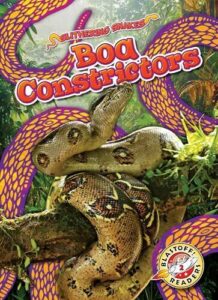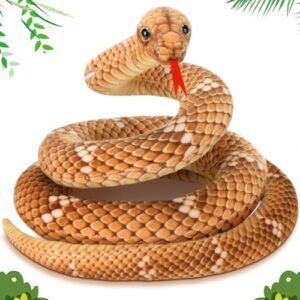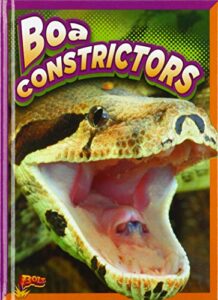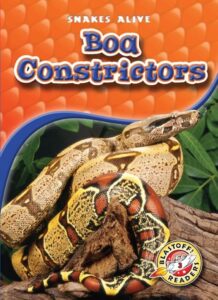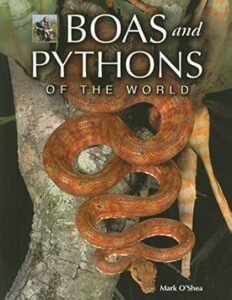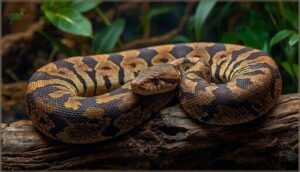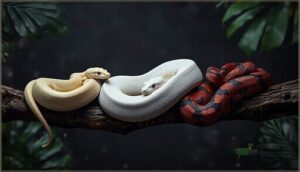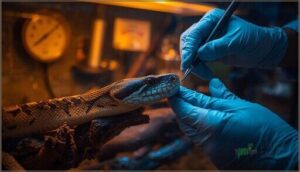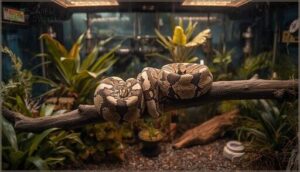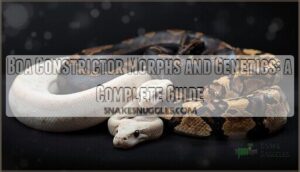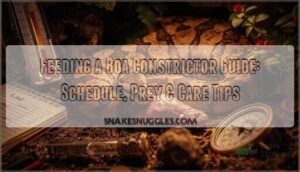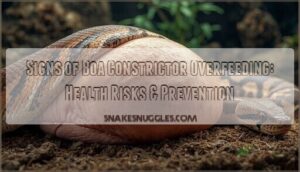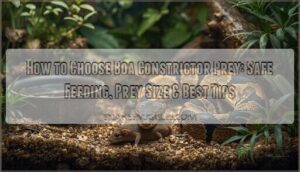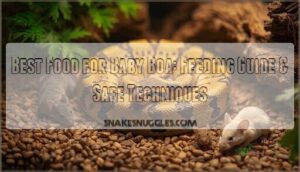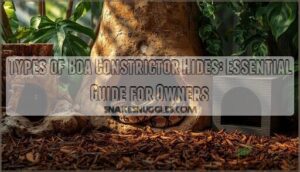This site is supported by our readers. We may earn a commission, at no cost to you, if you purchase through links.
You’ve decided to bring home one of nature’s most impressive constrictors—a snake that can live 30 years and grow over 10 feet long. Finding a boa constrictor for sale online opens up access to morphs and genetics you won’t see at your local pet store, from vibrant hypomelanistics to rare blood lines that command prices from $50 to $3,000.
But this decision carries weight: you’re committing to decades of specialized care, and the breeder you choose determines whether your snake arrives healthy or becomes an expensive veterinary case. The gap between reputable sellers with health guarantees and questionable operations shipping stressed animals is vast.
Your enclosure setup, feeding protocol, and humidity control will make or break your boa’s quality of life—and understanding what to look for before you buy separates successful keepers from those who end up rehoming their snake within a year.
Table Of Contents
- Key Takeaways
- Best Boa Constrictors for Sale Online
- How to Choose a Healthy Boa Constrictor
- Where to Buy Boa Constrictors Online
- Essential Boa Constrictor Care Tips
- Customer Experiences With Boa Constrictor Sellers
- Frequently Asked Questions (FAQs)
- Where can I buy boa constrictors?
- What is a boa constrictor snake?
- How much does a Baby Boa Constrictor cost?
- What is a red tail boa constrictor?
- Which is more aggressive, Python or boa?
- What is the lifespan of a boa snake?
- Are boas good pet snakes?
- What is the best beginner boa constrictor?
- How can I identify a captive-bred boa?
- What are common signs of stress in boas?
- Conclusion
Key Takeaways
- Buying a boa constrictor online gives you access to rare morphs priced between $50 and $3,000, but demands decades of commitment since these snakes live 30+ years and grow over 10 feet long.
- Reputable breeders separate themselves through live arrival guarantees, transparent breeding records, health documentation, and customer reviews exceeding 90% positive ratings—skipping this verification leads to expensive veterinary problems.
- Your boa’s survival hinges on precise environmental control including 80-90°F daytime temperatures with basking zones, 55-75% humidity, and enclosures at least 6 feet long for adults, plus species-appropriate feeding schedules that shift from weekly pinkies to monthly rats.
- Legal documentation including CITES papers and health certificates protects you from fines and seizure while verifying your snake’s legitimate origin, making paperwork as critical as the animal’s physical health signs.
Best Boa Constrictors for Sale Online
You won’t find boa constrictors in traditional pet stores, so online retailers and specialized breeders become your gateway to acquiring these powerful constrictors. Whether you’re searching for your first snake or adding a rare morph to your collection, knowing where to look makes all the difference.
Below, you’ll find top resources for live boas, care guides, and educational materials to support your journey into boa ownership.
1. Boa Constrictor Pet Snake Sale
You can find boa constrictors for sale online starting around $50 for juveniles, though price varies with morphs and genetics. Most boas for sale come from professional breeders who prioritize captive-bred specimens—these snakes are healthier and more docile than wild-caught alternatives.
When shopping for pet snakes, look for sellers offering live arrival guarantees and proper legal documentation. Online platforms like MorphMarket list thousands of boas, from common morphs to rare color variations.
Remember that boa constrictor sales require attention to reptile laws and shipping restrictions across state lines.
Best For: Experienced reptile enthusiasts who can commit to decades of specialized care and have the space, resources, and legal clearance to house a large constrictor.
- Boa constrictors are docile and handleable compared to many other snake species, making them one of the more manageable large constrictors for experienced keepers.
- Captive-bred boas from reputable breeders are generally healthy, well-adjusted, and available in a wide variety of striking color morphs and patterns.
- With proper care, these snakes can live 20-30 years, offering a long-term companion for dedicated reptile owners.
- Boa constrictors require significant long-term commitment, specialized housing, heating, and feeding (typically frozen-thawed rodents), which can be costly and demanding.
- Interstate sales and transport are restricted under U.S. federal regulations, limiting where you can legally purchase or move your snake.
- At just $10, this price is unusually low and may indicate concerns about the animal’s health, legality, or the seller’s credibility—most juvenile boas cost $50-$150 from reputable sources.
2. Big Boa Constrictor Snakes Book
Biology of the Boas and Pythons” delivers over 400 pages of hard science on snake biology and constrictor care, written by 79 leading herpetologists. This $100 hardcover, published by Eagle Mountain in 2007, dedicates six chapters exclusively to boa constrictor facts—covering everything from constriction strength measurements to wild population genetics.
You’ll find detailed reptile breeding data, habitat studies, and conservation insights that most boas for sale listings won’t mention. It’s graduate-level herpetology studies condensed into one reference, perfect for serious keepers wanting depth beyond basic snake care guides.
Best For: Serious boa keepers, herpetology students, and breeders who want advanced scientific data on boa constrictor biology, genetics, and conservation beyond basic care sheets.
- Written by 79 expert herpetologists with original research data on constriction mechanics, population genetics, and wild boa behavior that you won’t find in beginner guides.
- Six full chapters dedicated exclusively to boa constrictors, plus detailed appendices covering 34 related taxa—making it the most comprehensive scientific reference for the species.
- Includes real conservation and population data that helps responsible keepers understand wild boa challenges, habitat needs, and the impact of the pet trade.
- The $100 price tag and 400 page academic format make it overkill if you just need basic husbandry tips for a pet boa.
- Published in 2007, so some conservation status updates and newer genetic studies won’t be reflected.
- Graduate-level writing style means it’s dense reading compared to visual care guides—not ideal for quick reference or younger readers.
3. HyDren Giant Boa Constrictor Plush
While reference books anchor your knowledge, the HyDren Giant Boa Constrictor Plush offers a hands-free way to appreciate these powerful constrictors. This 80-inch soft plush materials creation features flexible vertebrae that let you pose it naturally—perfect for reptile decorations in your snake room or as a conversation starter about boa constrictor morphs.
At $35-$50, it’s a practical giant snake models option for enthusiasts wanting boa constrictor collectibles without the live animal commitment. Note the plush toy safety warnings for kids under three, and remember this doesn’t replace proper snake care research before buying boas for sale.
Best For: Reptile enthusiasts and collectors who want a realistic, oversized snake decoration or cuddle companion without the responsibility of caring for a live animal.
- The 80-inch length and flexible vertebrae design let you pose it like a real snake, making it great for jungle-themed decor or realistic display setups.
- Soft polyester fabric with plush filling works as both a decorative piece and a comfortable pillow or cushion for lounging.
- Priced reasonably at $35-$50 for its size, and it doubles as a fun prank prop or unique gift for birthdays and holidays.
- Some buyers report durability issues, with the plush breaking down after just a few months of use.
- The flexibility can be hit-or-miss—several customers found it harder to curl and pose than expected.
- Not suitable for young kids due to choking hazards and winding risks, limiting its appeal as a family toy.
4. Boa Constrictors As Pets Guide
Moving from collectibles to living companions, you’ll find that boa constrictor care demands real commitment. Their boa temperament stays docile with regular handling, making them excellent pet snake choices for experienced keepers.
You’ll need proper enclosure enrichment—sturdy branches and hides—plus vigilance during the shedding process when humidity matters most.
Their dietary needs shift from weekly pinkies to monthly rats as they mature. Don’t skip veterinary care; annual checkups catch issues before they become life-threatening.
Understanding boa constrictor morphs helps you anticipate specific care requirements for your chosen snake.
Best For: Experienced reptile keepers ready to commit to long-term care of a large, docile snake that requires precise temperature control, regular feeding schedules, and spacious housing.
- Docile temperament makes handling straightforward once the snake adjusts, with most boas tolerating frequent interaction after just a few sessions.
- Clear care requirements with predictable feeding schedules—juveniles eat weekly while adults only need food every few weeks, reducing daily maintenance.
- Long lifespan and robust health when proper humidity, temperature gradients, and enclosure size are maintained from the start.
- Significant space investment required, with adult enclosures needing at least 6 feet of length and sturdy climbing structures for their semi-arboreal nature.
- Humidity management can be tricky, requiring daily misting or moss additions to prevent shedding problems and skin infections.
- Ongoing costs add up quickly between frozen rodent purchases, annual vet visits, heating equipment, and potential emergency care for issues like mouth rot or inclusion body disease.
5. Boa Constrictors Kids Learning Book
Educational titles give young herpers an early foundation in reptile education and wildlife conservation. These books, designed for ages 6-8 with guided reading level K, cover essential boa facts through full-color photographs and interactive coloring pages.
You’ll discover authentic snake habitat information, hunting methods, and how these constrictors reach 13 feet over their 20-30 year lifespan.
Current editions align with STEM standards while teaching kids about reptile care and maintenance before they’re ready for boas for sale or deeper study in reptile breeding and genetics.
Best For: Parents and educators looking for age-appropriate reptile books to introduce kids ages 6-8 to boa constrictors through colorful photos and interactive activities.
- Full-color photographs and coloring pages keep young readers engaged while teaching real facts about boa habitats, hunting, and growth.
- Aligned with STEM standards and includes discussion questions, glossaries, and parent notes to support learning at home or in the classroom.
- Covers essential topics like lifespan, size, diet, and behavior in language that’s accessible for early readers without oversimplifying.
- The $26.95 price point is steep for a 24-page children’s book, especially compared to similar animal nonfiction titles.
- Focuses exclusively on boa constrictors, so kids interested in a broader range of reptiles or snakes will need additional books.
- Content about hunting and killing prey might not suit very young or sensitive children, even with the age-appropriate framing.
6. Boas And Pythons Worldwide Guide
Mark O’Shea’s 160-page reference guide reveals the global distribution and species diversity of over 100 boas and pythons across five continents. You’ll explore conservation status updates, ecological impact patterns, and captive breeding initiatives through stunning photographs and detailed species accounts.
This $8.98 volume connects wild boa constrictor populations to live boas available in today’s market, preparing you for informed snake care decisions.
Whether you’re researching boas for sale or advancing reptile breeding knowledge, this worldwide perspective transforms how you understand these extraordinary constrictors.
Best For: Snake enthusiasts, herpetologists, and reptile breeders who want a comprehensive global reference covering over 100 boa and python species with conservation insights and detailed habitat information.
- At $8.98 for 160 pages, it’s an affordable reference packed with stunning color photographs, maps, and personal field anecdotes from expert Mark O’Shea’s encounters across five continents.
- Covers critical conservation topics including IUCN status updates, habitat threats, illegal trade patterns, and captive breeding initiatives that help readers make informed decisions about snake care and ethical sourcing.
- Bridges scientific detail with accessibility for both beginners and experienced keepers, offering species accounts that connect wild populations to the pet trade and breeding programs.
- Some technical terminology and species classifications may challenge readers new to herpetology, and maps might lack the detail needed to pinpoint specific islands or smaller regions within a species’ range.
- The book’s age means certain information could be outdated, particularly regarding recent conservation status changes, trade regulations, or newly described species and subspecies.
- Coverage depth varies across species, with some boas and pythons receiving more attention than others, which might disappoint readers looking for comprehensive details on rarer or lesser-known species.
How to Choose a Healthy Boa Constrictor
Choosing a boa constrictor isn’t just about picking the prettiest morph—you need to know what separates a thriving snake from one that’ll give you headaches down the road.
A healthy boa shows clear physical signs, comes with proper documentation, and has a genetic background you can trust.
Let’s walk through the key factors that’ll help you make a confident decision.
Signs of a Healthy Boa
When you’re eyeing a boa constrictor health investment, focus on these snake care advice essentials: consistent weight gain, clear eyes without cloudiness, regular complete sheds, and strong feeding responses. Healthy snakes show no respiratory symptoms, mouth lesions, or lethargy. Check for proper scale care—no wounds or blockages on nostrils.
Weekly Boa Health Checks monitoring activity and appetite will keep your Boa Habitat thriving and your reptile health at its best. For trusted information on reptile care, consult reptile health guides to help guarantee the best outcomes for your pet.
Understanding Boa Morphs and Genetics
You’ve probably noticed stunning boas for sale with wild color patterns—those aren’t accidents. Morph inheritance depends on genetic traits passed through boa breeding, where dominant genes show immediately and recessive ones need both parents to express. Understanding animal genetics puts you in control of your reptile husbandry investment:
- Albinos lack melanin entirely, producing yellow and white boas with pink eyes
- Snow morphs combine albinism with anerythristic genes for pure white results
- Blood morphs offer deep red coloration with dwarf size variation
To guarantee the best care, research boa constrictor morphs and their specific needs.
Common Health Issues in Captive Boas
Respiratory infections from poor temperature control and parasitic infestations like hepatozoonosis threaten your boa’s vitality. Bacterial diseases, including mouth rot and scale rot, emerge when husbandry falters, while nutritional deficiencies from improper feeding compromise immune function. Skin conditions signal environmental problems you can’t ignore.
Understanding these pet reptile health challenges equips your exotic pet ownership journey, making snake health and guarantees from reputable sellers absolutely critical.
Importance of Legal Documentation
Legal compliance protects you from fines, seizure, and criminal charges that can derail your ownership dream. CITES documentation, health certificates, and breeding records verify your Central American boa’s legitimate origin while supporting conservation efforts and trade transparency.
Reputable reptile sales and breeding operations provide this paperwork with verified customer reviews and live arrival guarantees, ensuring you’re never caught in regulatory crosshairs without proof of lawful acquisition.
Where to Buy Boa Constrictors Online
Finding the right place to buy your boa constrictor online can feel like traversing a jungle, but a few key factors will point you toward sellers who prioritize healthy animals and solid customer care.
You’ll want to compare breeders based on their reputation, pricing transparency, shipping practices, and the guarantees they offer.
Let’s break down what separates trustworthy sellers from the rest.
Evaluating Reputable Breeders and Sellers
When buying reptiles online, breeder verification separates the real pros from the backyard gamblers. You’re looking for sellers who don’t just talk the talk but back it up with documentation, impressive online reviews, and breeding ethics that put animal welfare first. Here’s what sets trusted reptile sales and breeding operations apart:
- Seller ratings consistently exceed 90% positive verified customer reviews
- Live arrival guarantee backed by proper legal compliance with reptile laws
- Transparent breeding records showing genetics, lineage, and health documentation
Comparing Pricing and Value
Finding trusted sellers matters, but don’t overpay for what you’re getting. Prices swing wildly—common juvenile boas start around $50, while rare morphs like Piebald can hit $3,000. Morph market trends shift fast, and ethical breeding adds real value beyond flashy genetics.
When you buy a boa, factor in monthly care costs, too—they’ll run you $35 to $360 depending on your setup and vet access.
Live Arrival Guarantees and Return Policies
Before handing over your cash, lock down the seller’s Live Arrival guarantee and Return Policies—these protect you when things go wrong. Most reputable breeders keep dead-on-arrival rates under 1.4% through careful packaging, but you’ll need photographic proof within eight hours to file Guarantee Claims.
Refund Process rules vary: shipping costs stay non-refundable, and replacements often bill you again for delivery, so read the fine print.
Shipping and Delivery Considerations
Once you understand the guarantee, the reptile shipping process kicks in—and timing matters. Your boa ships Monday through Wednesday via overnight shipping to dodge weekend warehouse limbo.
Temperature Control between 40°F and 90°F keeps your snake safe during Reptile Transport, while certified Packaging Standards use triple-layer containers with 40-hour heat packs.
Delivery Logistics pause during holidays and bad weather, ensuring healthy reptile delivery every time.
Essential Boa Constrictor Care Tips
Bringing a boa constrictor into your home means you’re taking on the responsibility of creating a thriving environment for one of nature’s most impressive constrictors.
Your success as a keeper hinges on getting the fundamentals right from day one. Let’s break down the essential care requirements that will keep your boa healthy, comfortable, and thriving for decades to come.
Proper Housing and Enclosure Setup
Your boa’s home is their kingdom, and proper setup determines everything from snake health to behavior. Start with these three essentials:
- Enclosure size: Adults need at least 6 feet long, allowing full stretching and movement.
- Substrate types: Mix topsoil with play sand for ideal moisture retention.
- Security needs: Use screened lids with locks—boas are escape artists.
Quality reptile products and enrichment options transform basic housing into thriving environments.
Temperature, Humidity, and Lighting Requirements
Mastering thermal gradients unlocks your boa’s full vitality—aim for 80-90°F daytime temps with a basking zone hitting 86-95°F, then let nights cool to 68-80°F. Humidity control between 55-75% prevents shedding disasters, while 12-hour lighting cycles regulate natural rhythms.
Temperature monitoring with digital tools and environmental balance separate thriving snakes from stressed ones.
These reptile care fundamentals apply whether you’re exploring boas for sale or optimizing current snake health with quality reptile products.
Feeding and Diet Recommendations
Your snake’s growth depends on precise prey selection and feeding schedules. Hatchlings need meals every 5-7 days with pinkies, juveniles thrive on weaned rats every 10-14 days, and adults require larger prey every 3-4 weeks. Frozen-thawed rodents provide complete nutrient requirements while preventing injury.
Hydration management through fresh water daily promotes snake health, especially during shedding. These dietary supplements and reptile care practices guarantee quality boas for sale reach peak vitality.
Handling, Temperament, and Socialization
Think of your new boa as a wild ambassador learning to trust you. Handle sessions work best at 10-15 minutes, 2-3 times weekly, giving your snake time to adjust without overwhelming stress.
Juveniles acclimate faster with gentle, consistent interaction—avoiding feeding days and shedding periods prevents defensive behavior.
This reptile care approach builds confidence in both handler and snake, creating the foundation for outstanding animal health and a calm temperament throughout your pet’s lifetime.
Customer Experiences With Boa Constrictor Sellers
Buying a boa constrictor online can feel like stepping into uncharted territory, but real customer experiences reveal what you can actually expect from different sellers.
Reviews and support interactions tell you which breeders stand behind their animals and which ones leave you hanging when problems arise.
Here’s what other keepers have learned through their purchases, so you can skip the guesswork and find a seller worth your trust.
Online Reviews and Testimonials
When you’re ready to make the leap, dig into customer reviews and testimonial trends across specialty platforms. Rating systems on sites like Morph Market reveal real customer insights—over 90% of buyers report healthy arrivals, and top sellers maintain 100% positive feedback.
This feedback loop offers you control over your reptile purchase experience, ensuring customer satisfaction before you commit.
Customer Support and Aftercare Services
Quality customer support separates good breeders from great ones—87% offer multi-channel access, including email and social media. You deserve aftercare guidance and educational resources beyond the sale; 78% distribute care sheets, while 61% provide ongoing support for a year.
Sellers with structured programs retain 64% of buyers and earn 4.7-star customer satisfaction ratings. Warranty policies and live arrival guarantees protect your investment, ensuring a smooth reptile purchase experience.
Common Issues and Resolutions
Even with solid support, you might face delayed shipments—12% exceed 48 hours past promised delivery. Refund policies require scrutiny, as processing averages five business days with potential transaction fees.
Health guarantees protect you when boas arrive with undisclosed defects, affecting 6% of orders. Dispute resolution succeeds 83% of the time through buyer protection channels, ensuring captive-bred reptiles for sale meet advertised standards and snake health guarantees.
Tips for a Smooth Buying Experience
Smart purchase planning starts with reptile research and buyer checklist discipline. Before contacting breeders about boas for sale, verify their credentials through online reptile reviews and snake inspection protocols. Experienced buyers of buying boas recommend:
- Request multiple photos and recent feeding records from verified sources
- Confirm snake sales and shipping timelines match your schedule
- Compare pet store customer service ratings across platforms
Breeder verification eliminates 39% of disputes, so invest time upfront.
Frequently Asked Questions (FAQs)
Where can I buy boa constrictors?
You can buy boas through Morph Market, specialized online retailers like XYZReptiles and Big Apple Herp, reputable boa breeders, reptile marketplaces, snake forums, or select pet stores offering snakes for sale with health guarantees.
What is a boa constrictor snake?
A boa constrictor is a large, heavy-bodied reptile from the Boidae family, known for subduing prey through constriction. This non-venomous constrictor species inhabits diverse habitats across Central and South America.
How much does a Baby Boa Constrictor cost?
A baby boa constrictor usually costs between $50 and $150 for standard morphs. Designer genetics can reach $800 to $1,000, while rare morphs occasionally command $20,000 or more depending on market trends.
What is a red tail boa constrictor?
When you’re exploring boas for sale, understanding red tail facts matters. This Central and South American constrictor features rusty tail markings, grows 6-10 feet, and thrives in diverse habitats from rainforests to grasslands.
Which is more aggressive, Python or boa?
Ball pythons generally show calmer temperaments than boas. While individual reptile temperament varies, you’ll find boas display more defensive behavior during handling.
Both constrictors make good pets when properly socialized and cared for regularly.
What is the lifespan of a boa snake?
Like a fine wine aging gracefully, your boa can thrive 20-30 years with proper constrictor care.
Wild lifespan averages shorter due to predation, but captive boas often reach 35+ years with ideal reptile aging conditions and snake health monitoring.
Are boas good pet snakes?
Boas make excellent pet snakes for committed owners. Their docile temperament and manageable size balance well, though they require proper reptile care.
Understanding boa behavior and snake handling ensures successful pet ownership for decades.
What is the best beginner boa constrictor?
For beginners exploring pet snakes, Boa imperator stands out as your best choice. This species offers manageable size—usually 5 to 9 feet—and a naturally calm temperament that makes snake handling straightforward and safe.
How can I identify a captive-bred boa?
Truly captive-bred boas look wilder than their ancestors. Look for vivid patterns, flawless scales, breeder documentation, and calm temperaments.
Reputable sellers provide health records and genetic lineage proof when offering captive-bred reptiles for sale.
What are common signs of stress in boas?
Watch for restless pacing, substrate pushing, or food refusal—these signal stress in your boa.
Environmental shifts, rough handling, and poor enclosure conditions trigger these responses, compromising immune function and overall reptile health.
Conclusion
Think of your boa constrictor for sale search as forging a decades-long partnership—one that demands precision from day one. You’ve seen the morphs, weighed the breeders, and learned what separates thriving snakes from struggling ones.
Your enclosure setup, feeding discipline, and vendor choice aren’t just details—they’re the foundation of your snake’s entire lifespan.
Choose with authority, prepare without shortcuts, and you’ll realize the full potential of keeping one of nature’s most commanding constrictors.
- https://cites.org/sites/default/files/eng/com/ac/28/E-AC28-14-01_Annex3.pdf
- https://www.youtube.com/watch?v=QVX0vgfp0HU
- https://www.xyzreptiles.com/brief-history-boas-place-pet-trade/
- https://www.biologicaldiversity.org/news/press_releases/2015/constrictor-snakes-03-06-2015.html
- https://pmc.ncbi.nlm.nih.gov/articles/PMC9602588/



